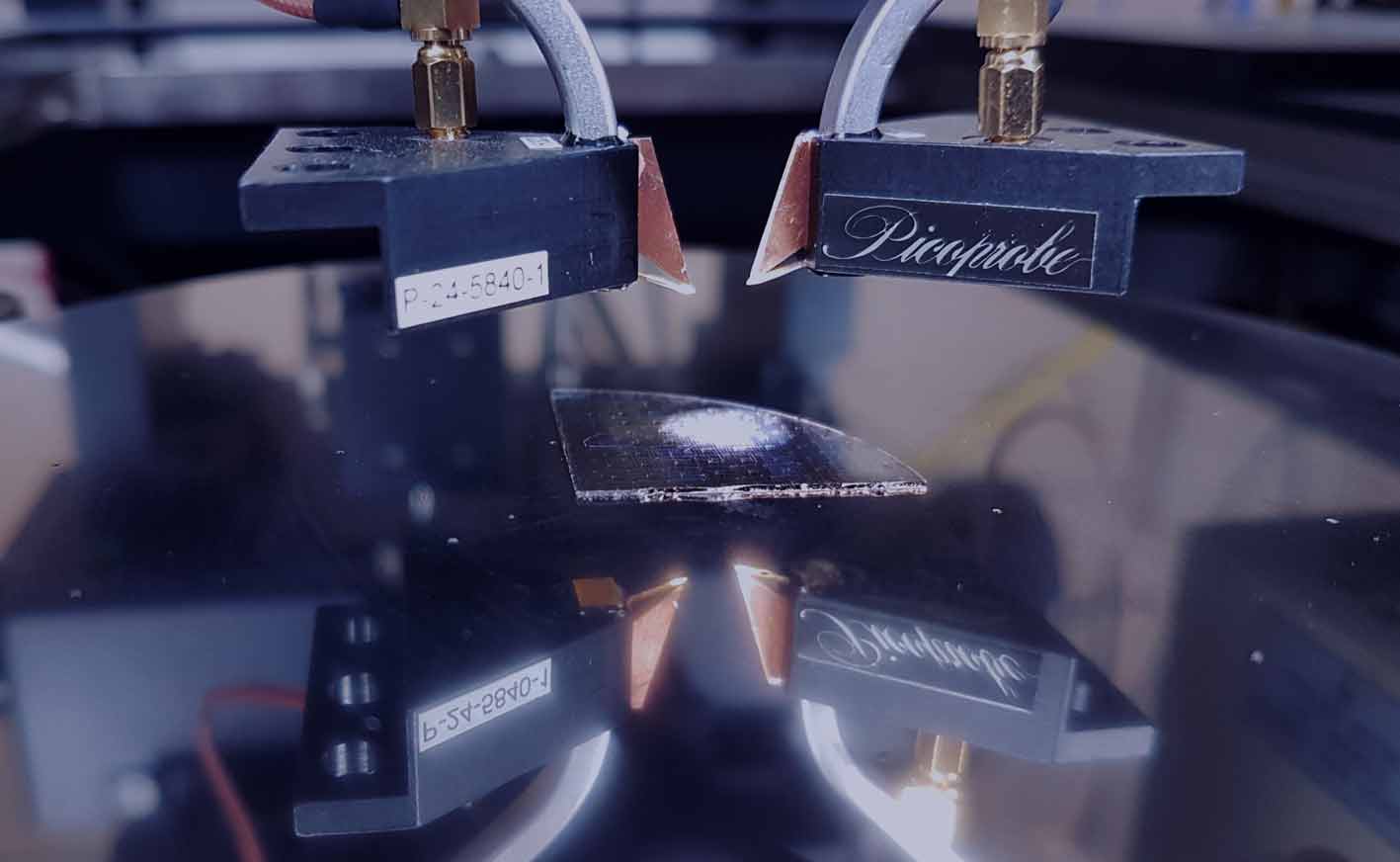
We seek to develop new generations of wireless communications systems providing extremely high aggregate data transmission capacities, approaching 1 Terabit per second. We seek to provide enormous data capacities, up to 10 Gb/s, to each user, whether the user is in a fixed location or is mobile and free to roam.
Our goal is to provide almost unlimited access to data, from almost anywhere.
Our work draws on novel systems architectures and signal processing algorithms, sophisticated high-frequency IC designs, and advanced semiconductor technologies.
Key to these networks is massive spatial multiplexing, i.e. the use of tens or hundreds of simultaneous, independently-aimed signal beams, each carrying an independent data stream. Such multiplexing is enabled by short signal wavelengths and by transmitters and receivers having arrays of tens to hundreds of signal channels.
Our work will also be the foundation of a new generation of compact yet high-resolution imaging systems for cars and UAVs, and systems merging communications, sensing and imaging.
Themes
Systems
We address the challenges in high-rate, high-frequency wireless networks, including channel discovery in highly directional links, tracking of mobile users, and signal re-routing via mesh networks. We develop algorithms for high resolution localization in 100-1000GHz networks and imaging techniques for channel discovery. The imaging techniques we create will be implemented in high-capacity communications, localization and imaging networks that support virtual and augmented reality and seamless telepresence, while maintaining energy efficiency.
Integrated Circuits
We develop modules that contain arrays of antennas and their RF signal channels. The modules operate with RF carriers in the 100's of GHz, with arrays of 100-1000 elements capable of transmitting or receiving 100-1000 independent beams simultaneously. We also develop baseband signal processing that can spatially demultiplex hundreds of separate high-rate signals with moderate DC power consumption. We use analog and digital equalizers or adaptive beamformers to correct intersymbol interference in these high-rate streams caused by multipath propagation.
Devices
We develop advanced GaN and InP transistors that will increase the output power and efficiency of our transmitters and improve the sensitivity or our 100-1000GHz receivers. These component-level improvements will reduce system power, increase system range and bit rate for carrier frequencies where silicon solutions remain feasible. In addition, they will increase capacity in higher-frequency systems and the resolution in imaging.
Demonstrations
We create three grand-challenge demonstrations. The first of these is a spatially multiplexed (massive MIMO) network base station providing simultaneous independent signal beams, scalable up to 1,000 mobile users. The second is a spatially multiplexed point-point backhaul link, scalable up to 640Gb/s data rate. The third is a high-resolution video imaging system using within the same testbed. Modularity of the testbed allows easy changes of the operating frequency, while the array can be progressively scaled from a few elements to many hundreds.
Application
Areas
We are developing Terabit-per-second capacity wireless hubs and wireless backhaul links for high capacity access to the internet, to users whether mobile or in offices or their homes.
The future cellular infrastructures that we are creating will support cm-precision localization, supplementing GPS, and will use imaging techniques to locate communications partners.
This intelligent immersive infrastructure will support low-latency virtual reality (VR), augmented reality (AR), and seamless telepresence.
We are also driving a revolution in transportation, supporting autonomous vehicles and intelligent highways.